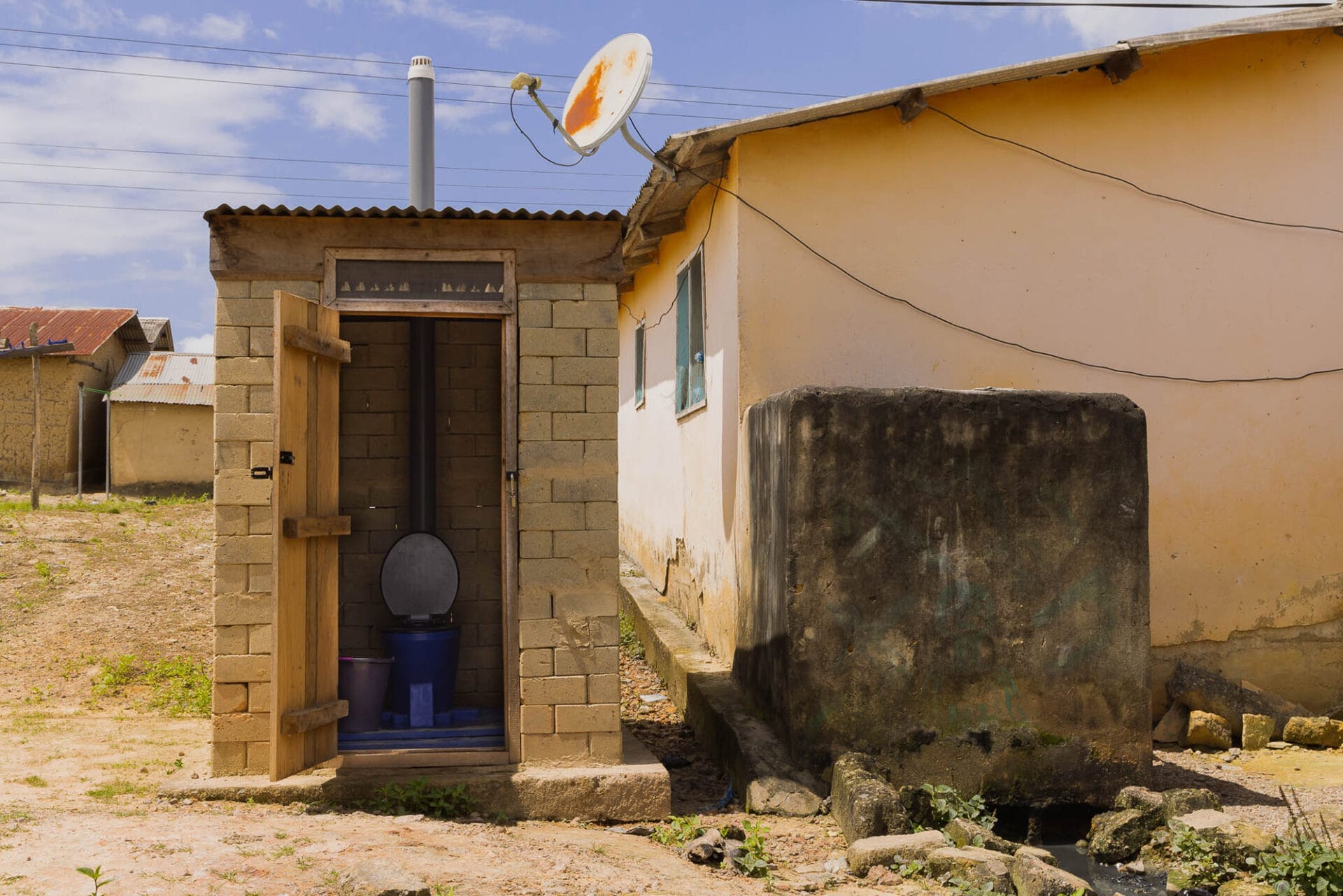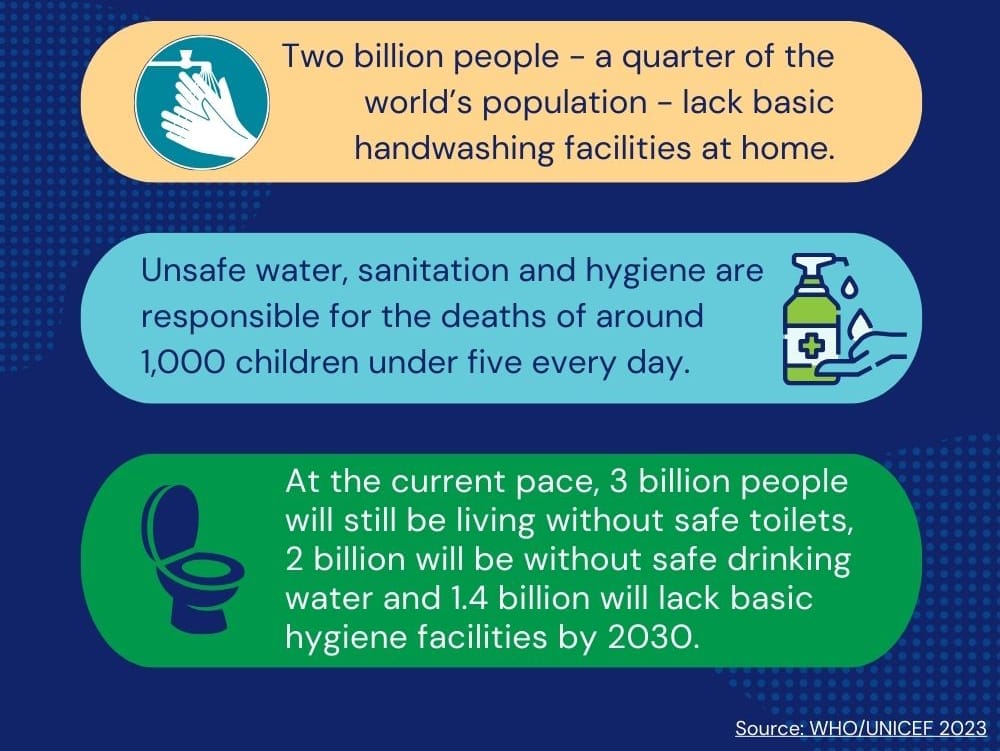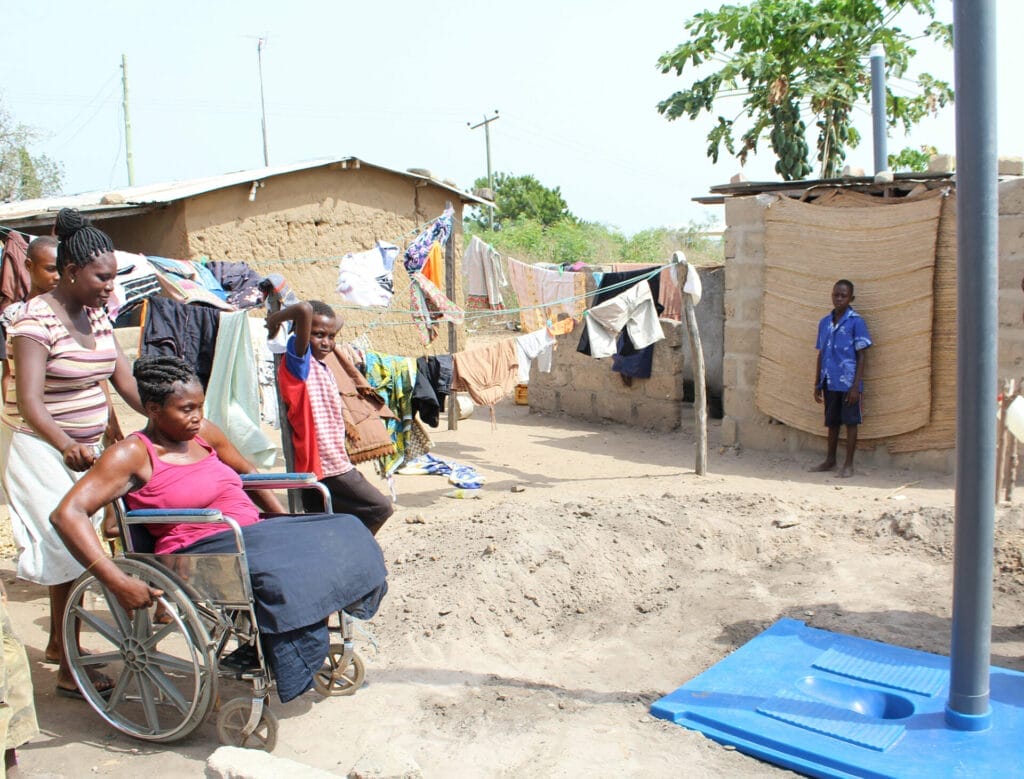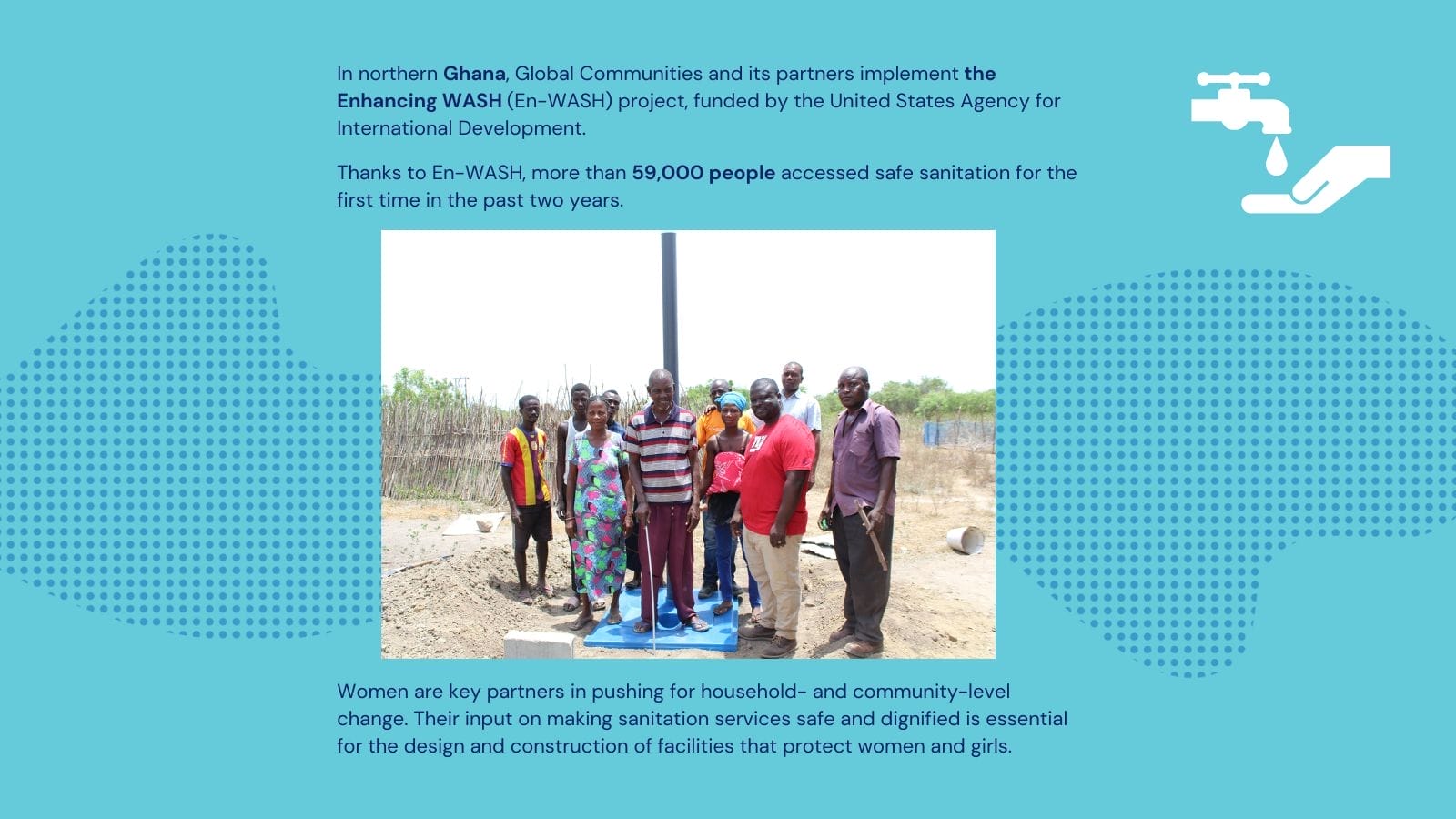News > Blog
If You Care about Ending Violence against Women and Girls, Care about Toilets
Published 12/18/2023 by Global Communities

By Jason Brooks, Technical Director, Water Security, Sanitation and Hygiene, Global Communities
Have you ever used a bathroom stall without a lock? How about dark public facilities while toileting? How did these experiences make you feel?
There are few moments when we feel as vulnerable as when we are attending to our biological needs. All people need toilets and privacy, but women and girls experience increased vulnerability because of menstruation and risks of gender-based violence (GBV).
In contexts as varied as India, Vietnam, Kenya and Ghana, large numbers of women cite the lack of household sanitation and on-site water sources as heightening their fear of sexual violence. This fear is not unfounded. Studies show that in some settings, GBV risks more than double when women and girls do not have safe toilets in their homes. These pervasive risks, anxiety and trauma take a toll on their health and quality of life, limiting their full potential. Needless to say, they are exacerbated in humanitarian settings.

Two billion people worldwide lack access to basic sanitation, and half of them are women and girls. Using unlit and unsafe public facilities, or resorting to open defecation, is dangerous. Lack of sanitation kills.
How are we doing?
The United Nations General Assembly (UNGA) explicitly recognized the universal human right to water and sanitation on July 28, 2010. Five years later, the UNGA singled out sanitation as a distinct human right, separate from the right to water. The Sustainable Development Goal 6 (SDG 6) calls for “ensuring availability and sustainable management of water and sanitation for all.” Although there is overall progress in SDG 6, rural sanitation coverage has declined by some measures.


In 2018, the UN declared the period of 2018 to 2028 the “International Decade for Action on Water for Sustainable Development,” leaving many to ask, “What about sanitation?” Sanitation affects not only our health, but also our dignity and quality of life. On World Toilet Day 2023, the UN Children’s Fund (UNICEF) made a sweeping statement that public health leaders have been making for a decade: “Toilets are a foundation stone of public health and play a critical role in protecting the environment.”
Despite these declarations, funding for sanitation consistently lags behind funding for water. We proclaim, “Water is Life,” while forgetting that unsafe sanitation exposes women and girls to the risks of violence and death. To accomplish SDG 6, the world must work, on average, five times faster to meet the sanitation target of SDG 6 – safe toilets and water for all by 2030.
Expanding the message and the impact
For decades, the global campaign for sanitation has focused on children. The clarion call against open defecation has highlighted the negative impacts of unsafe sanitation on the health of children under five. Many are familiar with the devastating statistic that more than 1,000 children under five die each day from the lack of adequate water, sanitation and hygiene services.
Toilets are a foundation stone of public health and play a critical role in protecting the environment.
UNICEF, 2023
The thought of children dying of entirely preventable diseases has kept advocates, officials and frontline workers tirelessly motivated in the life-and-death battle for improved sanitation. Significant progress has been made in reducing childhood deaths associated with the lack of access to water and sanitation services. Women and girls, however, and those who care about their safety, are raising their voices: “Don’t forget about the negative impacts of unsafe and undignified sanitation on half of the world’s population!” Concerns about the impact on children under five should continue to motivate us, but we cannot ignore a growing body of compelling evidence that the lack of sanitation is hurting women and girls at a disproportionate rate.

An urgent need for a toilet is an uncomfortable situation, but it should not be a dangerous one. The normal, daily need that all people experience should not cause anxiety and lead, all too often, to violence.
What can I do?
So now that you care about sanitation, not only as a children’s health issue but also a women’s rights issue, what can you do to effect change?
- See something, say something! When you see a problem, bring it to the attention of others. If a public toilet is in a poor condition or lacks basic amenities, such as good lighting and sturdy door locks, don’t just walk away in disgust. Demand better services for all. It’s a right, not a luxury. Tell business owners that you cannot patronize their businesses unless they provide safe and dignified sanitation. Tell the administrators of public facilities and schools that you demand better services. Stop tolerating poor quality sanitation. Speak up!
- Demand equal funding for water and sanitation! We do not need less attention to water scarcity, which also disproportionately affects women and girls. We need equal attention to safe and dignified sanitation. Globally, more people lack sanitation than safe water, yet funding for water continues to outpace funding for sanitation, resulting in slow progress. According to the World Health Organization, while 45% of countries are on track to achieve their drinking-water coverage targets, only 25% of countries are on track to achieve their sanitation targets. The UN World Toilet Day falls every year on November 19th, and it has been around since 2013. When was the last time you went to a World Toilet Day rally?
- Not just for you! If you do not feel like this issue affects you directly, think about how it affects the women and girls in your life and community. Whether you live in a bustling city with too few safe and clean public toilets, or in a household where “this is just the way it has always been,” advocate for those who suffer most from the lack of safe and dignified sanitation.
- All are welcome! Do not forget about people who are marginalized socially or physically. The facilities in places you frequent may be adequate for your needs, but what about the needs of those who need special accommodations, for example more space, facilities they can easily reach and use, spaces for children and babies, and spaces for those who may be made to feel unwelcome? No person should feel that a public facility does not meet their needs, and their right, to safe, dignified sanitation.
The need for a toilet should never be a life-and-death dilemma. Safe toilets for safe communities!




